Perched by an old harbour on the shores of the Baltic, the modest white buildings of the Glasmuseet Ebeltoft are home, unexpectedly, to one of Europe’s largest collections of contemporary glass art.
Historically, the production of glass broadly fell into two camps: industrial glass, mass-produced and utilitarian; and hand-blown, decorative glass, produced by skilled craftsmen to the plans of a designer. Even today, glass still does not have quite the artistic status of painting or sculpture.
An important step, however, was taken in the US in 1962, when Harvey Littleton founded the first small-scale glass workshop in a garage in Toledo. The idea was that glass could be a medium, not just for chandeliers or window panes, but for art, and that a glass work could be both designed and made by the same artist. A few years later, the Danish ceramicist Finn Lynggaard (1930–2011) encountered the studio glass movement while lecturing at Sheridan College in Oakville, Ontario, and was hooked. After raising the profile of glass in Gothenburg, London and elsewhere in Europe, in 1980 he moved to Ebeltoft (‘Apple Hill’) – considered a ‘wilderness’ by some of his students – to set up a glassblowing studio. The Glasmuseet was opened in the town’s former customs and excise house in 1986.
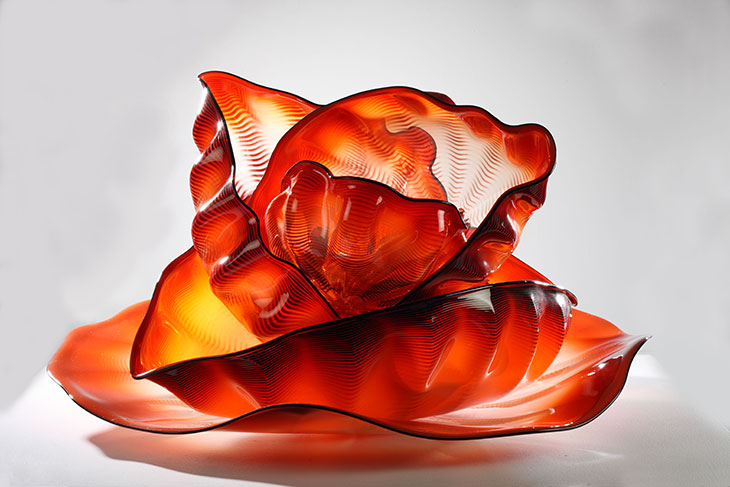
Vermilion Persian Set with Black Lip Wraps (1989), Dale Chihuly. Glasmuseet Ebeltoft
In line with its conception as an institution of and for glass artists, the Glasmuseet relies for its entire permanent collection on donations from the artists themselves. Today, this collection amounts to more than 1,500 pieces from dozens of countries, displayed on rotation.
Some of the best are by the great American glass artists. Dale Chihuly, for example, donated his Vermilion Persian Set with Black Lip Wraps, an erotic, multi-layered sculpture from 1989 composed of brilliant shells of colour with shimmering wavy surfaces, encased one within the other. A sculpture by Littleton himself, Red/Blue Descending Form (1984), consists of trails of indigo, orange-red and pink running through a melting block of transparent glass. This abstract form captures the quintessential characteristics of glass as a material: light, colour, fluidity. One of the most valuable pieces, Animal Vessel by William Morris (1989), uses multiple layers of glass over a flattened vase shape to depict ghostly spear-holding figures on a glittering salmon-pink and powder white-and-blue background, in an evocative allusion to the cave paintings at Lascaux.
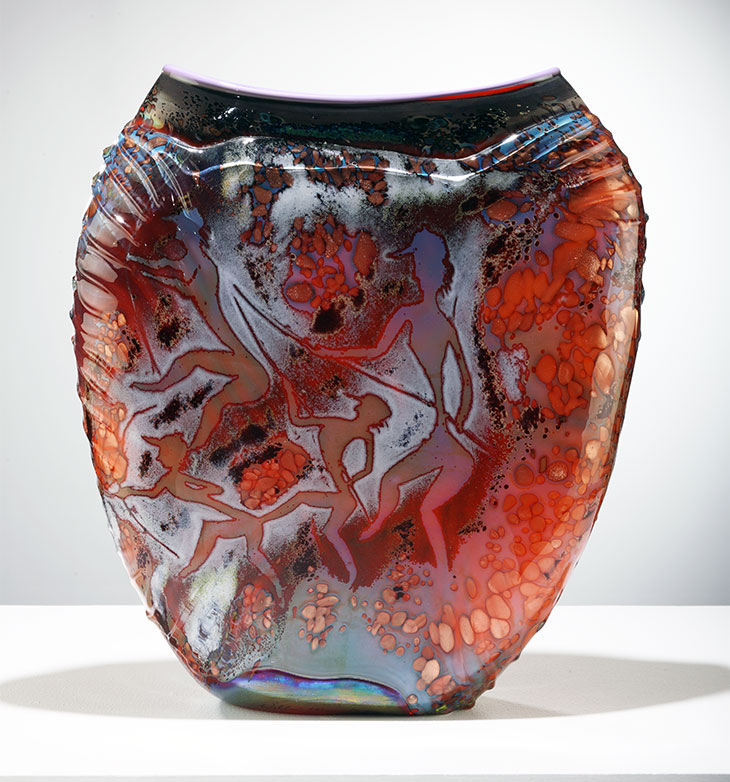
Animal Vessel (1989), William Morris. Glasmuseet Ebeltoft
Japanese glass art is also well represented. By Kyohei Fujita there is an oversized imitation of a Japanese lacquer box from 1989. Its delicate surface is finely overlaid with gold and silver leaf and red and white spots, like drops of paint. More experimental is Yaunori Mochizuki’s Blooms (1998), an ingenious set of four towers of square panes of green glass, each of which is painted with part of the image of a flower, so that, viewed at an angle, the whole flower can be seen, but side-on, it disappears.
Other memorable pieces use their medium in ways ranging from the classic to the unexpected. Near and Deep (2015), by the Australian artist Clare Belfrage, is an elegant, meditative sculpture in the shape of a rock washed by the sea, with green and brown veins weaving over it in a wave-like pattern. Pop art is invoked in the work of Åsa Jungnelius, from Sweden. Her Weapon, Oh I am on Fire, Make it all up (2010) consists of a giant stick of ruby-red lipstick accompanied by a bottle of scarlet nail varnish; the bold elongated forms of these two feminine ‘weapons’ complement each other. The subject works particularly well in glass, the material enhancing the shiny surfaces of metal and plastic which it represents.
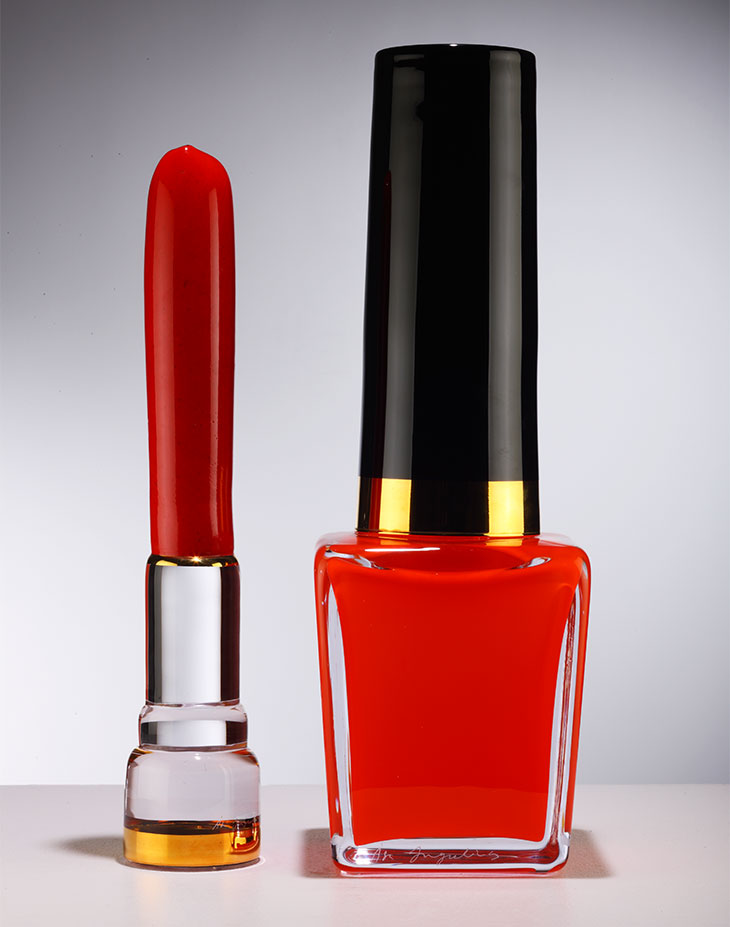
Weapon, Oh I am on Fire, Make it all up (2010), Åsa Jungnelius. Glasmuseet Ebeltoft
According to the museum, one piece which generates strong reactions from visitors is Angry Vegan (2013) by the De La Torre Brothers. This is a glass totem-like figure with lime-green curls snaking from its head and torso, oversized white eyeballs and protruding teeth. It is dressed in purple boxing gloves and underpants and green boots, and affixed to a lenticular print of bowls of Mexican tapas. The overall effect is humorously grotesque: a warning to all meat eaters. Equally striking is Mia Lerssi’s Butt, I love you (2001). This consists of a single piece of deep-red glass in the shape of a pair of frosted buttocks, with a feathery tuft protruding from the middle – perhaps suggesting that there is a fine line between art and kitsch.
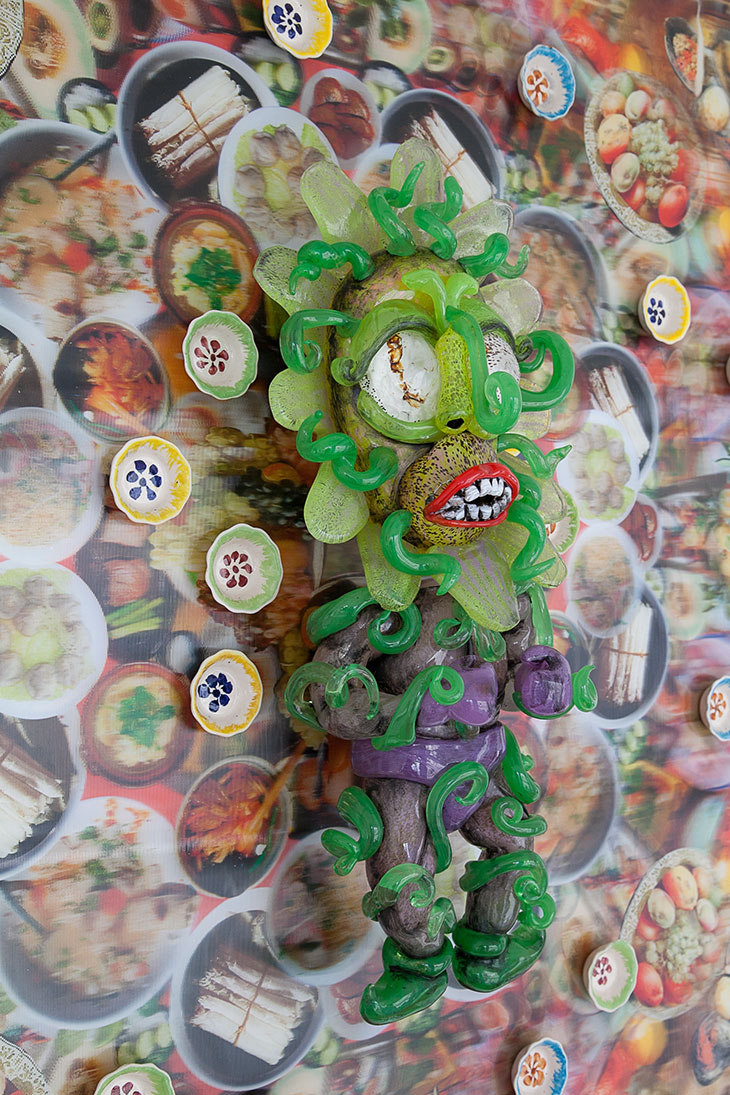
Angry Vegan (2013), De La Torre Brothers. Glasmuseet Ebeltoft
The Glasmuseet’s temporary exhibitions are small in scale but imaginative, often allowing an up-and-coming glass artist the opportunity for a solo show. The most recent were ‘On Solid Water’, a challenging display of socially and politically engaged sculptures by John Moran, and ‘No Strings’, an exhibition of works made from glass beads. (I was able to see these when I visited the museum last month.) Four new exhibitions have just opened, including ‘Chinese Whispers’, a project exploring questions of identity led by the English artist Erin Dickson.
The irony is that, for a museum which was intended to inaugurate a bold new phase in the history of glass, the Glasmuseet has, in its 33rd year, already become a part of that history. As a small, private foundation, its ambitions are inevitably restricted by its budget. Nevertheless, it is well worth a visit for anyone interested in the potential of an increasingly rich art form.
For more information visit the Glasmuseet Ebeltoft website.
Unlimited access from just $16 every 3 months
Subscribe to get unlimited and exclusive access to the top art stories, interviews and exhibition reviews.

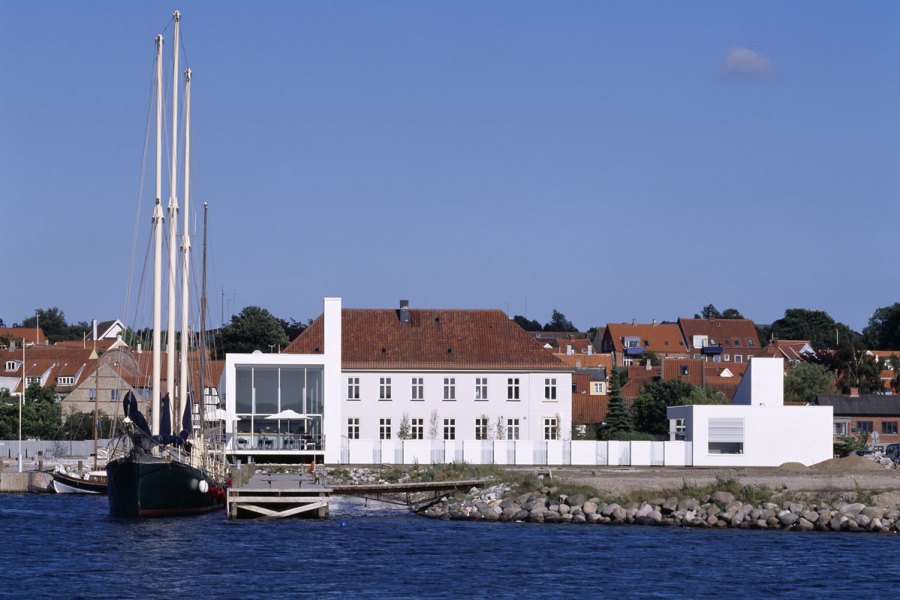
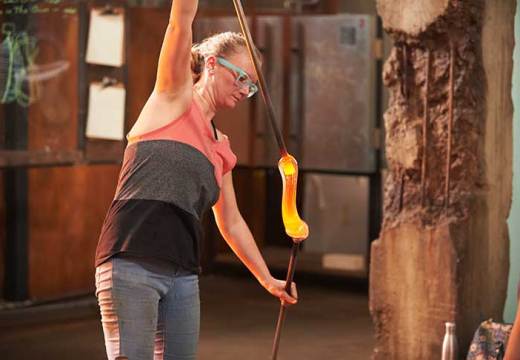
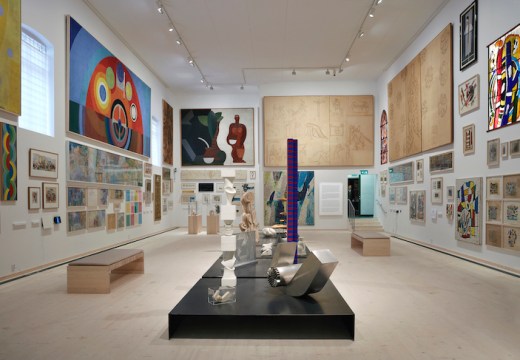
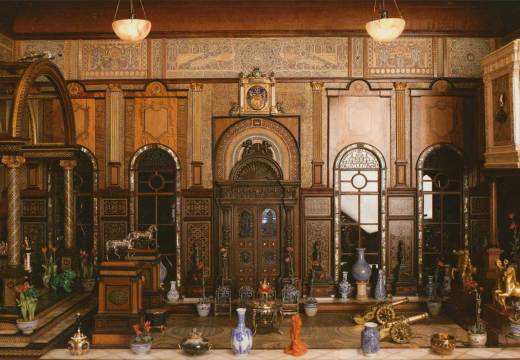









![Masterpiece [Re]discovery 2022. Photo: Ben Fisher Photography, courtesy of Masterpiece London](http://www.apollo-magazine.com/wp-content/uploads/2022/07/MPL2022_4263.jpg)
Why are fathers so absent from art history?